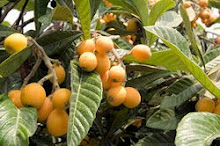
Flowers made from a simple material; fish scales, from the island of S. Miguel, Azores
Sunday, June 6, 2010
Fish Scale's Flowers
In the Azores island, crafts are a way of making some money or to give wings to the inspiration of the people. A tourist can see delicately beautiful, jewel-like flower bouquets that are displayed like artworks under glass in the Azores islands in the Atlantic. But these artworks have a slippery secret: They're actually made from fish scales. The scales are washed thoroughly, sorted by size, dyed white, pink, yellow or peach with natural materials - using natural elements like hibiscus flowers or coffee - and then trimmed and polished. These are sewn with metallic thread and studded with pearls, the scales are glued and meticulously arranged into bouquets or "paintings" by skilled artisans. The most popular flower for this craft is the "hortênsia" or hydrangea. Usualy they are given as a wedding gift. The origin of flores em escamas de peixe (flowers in fish scales) is hazy: It is believed to have originated as a hobby of fishermen's wives in the mid-19th century. Today you can buy the fragile creations at gift shop in Ponta Delgada, on the biggest Azores island, São Miguel or at the airport and in small jewelry shops.
Labels:
açores,
artisans,
artworks,
azores,
crafts,
fish,
flores escama de peixe,
island of azores,
s. miguel,
tourists
Sunday, April 4, 2010

Have you ever been to Azores? If not, a trip there would make you see how in such a small area the landscape, the topographic diversity can give you a fabulous vacation. There are mountains to see, lagoons to know, and sea to explore.
In the nine islands of the Azores there is a plentiful fare of tasty seafood such as; cavaco (a crustacean that looks like a small lobster), barnacles (cracas),and the famous lapas (limpets)usually sold on the streets in willow baskets which hangs from a pole, carried by men, across their shoulders - it is a gastronomic heritage common to all islands.
The most popular meat dishes are; the rump, roasted in a clay bowl, from the Terceira (Third) island, the beloved boiled dish from Furnas, in the island of S. Miguel (St. Michael), which consits of a mixture of meats and vegetables cooked in hermetically sealed containers; these are placed in a hole inside the Earth, which is close the the very hot geysers, so the food can be cooked with this heat. Lets not forget the also typical recipe of yams (inhames) with linguiça (typical sausage) which is eaten in several islands.
There are excellent cheeses in all islands,and the most famous is the one from São Jorge, known simply as "cheese of the island", (queijo da ilha).
In the wine sector the verdelho wine, better known as wine of Pico (do Pico) island, where the landscape and the culture of its vineyards were classified a world heritage, and the wine of Biscoitos (Biscuits wine) in the Terceira island.
In the desserts, the massa sovada (sweet bread) is predominant, but there are typical, tasty cupcakes (queijadas) from Graciosa (Gracious) island, the cupcakes from Vila Franca de Campo in the island of S. Miguel (St. Michael) and many other sweets from each island. Fruits abound like the pineapple with its sweetness and lightly spicy flavor, the guava with its pink pudding like texture and exotic tastte, that will leave excellent memories to everyone who goes to Azores and get a taste of it's gastronomy.
The following recipe is one of sustenance, people would do this dish with green or dried fava beans (broad beans).
FAVAS GUISADAS COM CHOURIÇO
(Fava Beans Stew with Portuguese Sausage)
Ingredients:
1/4 cup oil or olive oil
1 onion
3 garlic cloves peeled and chopped
1 chouriço
2 lbs shelled fava beans
chicken broth or plain water
salt to taste
1 small bouquet of coriander leaves (cilantro or coentros) and 2 teaspoons of sugar.
Saute the garlic and chopped onion in the olive oil for 7 minutes taking care to not let burn. Add the sausage (chouriço) cut in round pieces. Mix and let cook for 5 minutes more. Add enough water or chicken broth to cover the mixture at least one inch. Cover the pot and bring to boil, let it then simmer around thirty minutes, more or less, it depends in the quality of the sausage. Add the rinsed fava beans, the sugar and let boil and cook for forty five minutes more. In the end rectify the salt and add the chopped coriander leaves. Cover and let stand for twenty minutes before serving.
Note: I like better the green fava beans; you can buy these in frozen bags at some supermarkets that sell Portuguese's food, and in the Northeast there are plenty of stores that carry it. The dried fava beans have to be done like dried regular beans; they have to be soaked overnight, then using a small knife to remove the top peel in a small slice (it is the part that has a dark line in the middle), you have to this to the green beans too, because this part of the bean is very hard to cook. The secret is to let it cook slowly and do not rush; the finished flavor depends on the quality of the ingredients, especially the sausage. I usually let cook the sausage thirty minutes or longer because some sausages take longer to cook than others, but if the sausage cooks quickly, lets say in half an hour or less, you can cook the sausage and add the beans at the same time to cook everything together from the very beginning. The coriander leaves and the two teaspoons of sugar improve the taste of the fava beans.
Subscribe to:
Comments (Atom)

